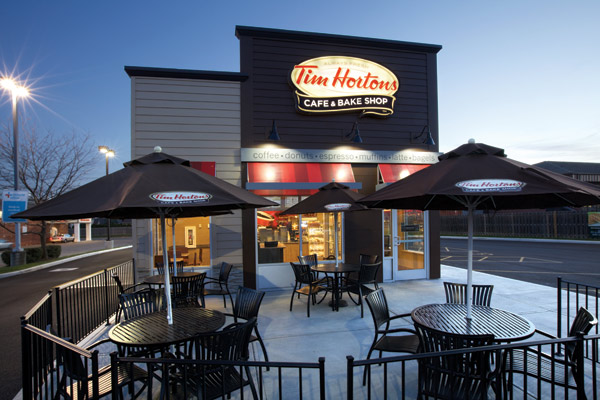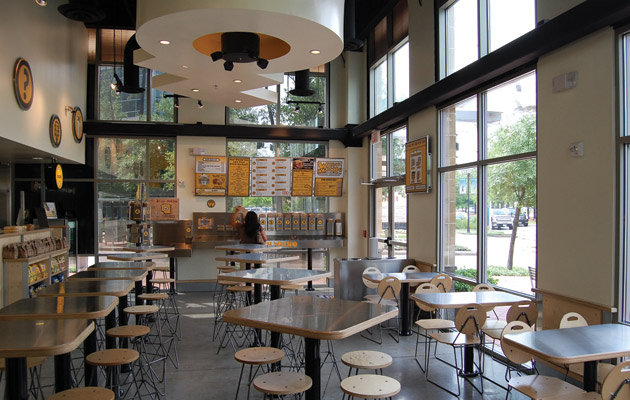Owner Engagement, Communication, Tech Solutions Pave the Way for Smoother Openings
The voluminous number of tasks to complete before a restaurant opening boggles the mind. Securing and designing the space, vetting contractors, and managing the construction process represent just a few of the time-consuming responsibilities project teams must tackle. Concept development and operations management may be among restaurant owners' core competencies, but few have expertise managing the design and construction tasks that come with opening a new location. Thankfully, in most cases, chains provide franchisees with assistance. In fact, some manage the entire design and construction process so franchise owners can focus on other aspects of setting up their businesses. For non-franchised eateries, seasoned consultants and contractors can assume project management responsibilities.
Nevertheless, considering the significant risks that come with opening a new restaurant and the importance of getting the design and construction of the venue right, owners should monitor project progress and can provide valuable assistance by being engaged in the process. We asked four industry professionals to share their strategies and insights about keeping a construction project on track from the design phase through opening, and how owners can best serve their own cause.
Project Process 101
Any restaurant construction project consists of a half-dozen basic phases:
- Programming: establishing the design's requirements and parameters
- Architectural drawings: translating the design concepts into formal plans that provide the big picture, look and feel of the space
- Construction drawings: creating documents that provide detailed specifications for construction
- General contractor selection: may be preceded by open bidding process
- Construction: putting together the "sticks and bricks"
- Commissioning: adjusting systems and equipment in preparation for opening
Numerous design and construction management professionals and tradespeople participate in the construction process. Typically, an architect guides the early stages and a construction manager oversees the latter stages. Each building team has an important role to play, and project managers must schedule and sequence the contributions of each one. These tasks demand detailed planning and regular communication.
An owner's involvement may begin in the programming phase by providing input so that the architect can design the space according to the owner's vision and needs. Many chain restaurants have design prototypes that incorporate the key elements of the look and functionality for each franchise site. In those cases, the programming step is largely built into the prototypes.
While prototypes provide big picture guidelines every site has its own quirks — such as state and local codes and regulations, size limitations, traffic patterns and climate — that require the architect to customize plans for each location. The exterior of a Tim Horton's Café and Bake Shop in Dublin, Ohio, for example, had to be cladded with shale stone in order to fit in with the aesthetics of the business district and win approval from local authorities. "That material isn't part of our prototype," says Ivana Vinski, the Columbus, Ohio-based restaurant design supervisor for Tim Horton's U.S. franchises. "Some of our biggest design challenges have to do with the nuances of local and state regulations."

Franchisors recommend owners work with architects who are familiar with the brand, if possible. Which Wich, a QSR specializing in customizable sandwiches, provides franchisees with a list of approved architects and general contractors vetted by the corporate office. "If the franchisee has someone they would like to work with that maybe they know or have worked with before, we will vet them on behalf of the owner," says Jeremy Cook, the Dallas-based chain's vice president of real estate and construction.
When a franchisee wants to use an architect or contractor that hasn't worked on a Which Wich project previously, "you can figure that there will be a learning curve," Cook says. "We don't deter a franchisee from using a new architect, but we can expect more communication between us and them will be required." Extra communication is also necessary when introducing new prototypes or design concepts, even when designers and contractors have previous experience with the same chain.
Expect the Unexpected
Upon completion of the construction drawings, the construction manager sequences on-site work of the various trades — electricians, plumbers, masons, drywall installers, alarm specialists and others — in order to create the most efficient schedule. But few projects go exactly as planned, and delays on one aspect of the project can ripple through others, causing further delays. Project managers quickly learn to expect and navigate around the unexpected, keeping all parties informed as situations change.
A renovation of a downtown Boston building for a Max Brenner Chocolate Bar unit, for example, ran into a snag when a plumbing inspector unexpectedly mandated the site add an additional grease trap. "The kitchen was located in a tight area of the basement," recalls Joe Crowley, project manager for Wilmington, Mass.-based Trinity Building + Construction Management Corp. To install the grease trap, workers had to break apart a large area of the concrete floor and that meant that wall framing, and electrical and plumbing work had to wait until the floor was rebuilt. "It was a huge curveball in the project," Crowley says. "The only thing we could do was work a lot of overtime to catch up." And that meant lots of high-priority phone calls and emails among those affected.
Tap Tech Tools for Project Tracking
Unanticipated glitches force project managers to make scheduling adjustments and coordinate those adjustments with all the players involved. In addition to phones and email, most project managers rely on software to orchestrate the building team. Tim Horton's restaurants use a database program called Tim Trac to monitor progress on each project. A customized version of an off-the-shelf program, Tim Trac provides a detailed checklist with milestone dates for each item.
As the project team completes the tasks, Tim Horton's construction managers note the date of completion, enabling Vinski to check the status of any project at a glance. "We delegate a lot of work, and with Tim Trac we know who is doing what," Vinski says.
Construction managers assigned to specific regions may oversee three or more projects at a time. Although they visit each site frequently, construction managers may not get to each one every day. The sooner managers know of project hurdles, the sooner they can launch a contingency plan; as a result tracking tools like Tim Trac become essential. Tim Horton's franchisees also have access to this master schedule so they can follow the progress.
On many projects, contractors and subcontractors use smartphones and tablet computers to access the construction schedule — a more detailed version of the master schedule. "Every three weeks, we distribute a three-week schedule that is more detailed than the original schedule distributed at the beginning of the project," Crowley says. Compiled using readily available project tracking software, Crowley's three-week schedules show all subcontractors what has to be done on what day and in what order. "They show critical paths in the project, also making them a great tool to communicate with the client," he adds. Critical paths can show whether, say, a late material shipment could cause a delay on a project milestone.
Tony Akly, president of Restaurants Consulting Group, Inc., an Atlanta-based design/build construction and consulting firm, recently found another valuable technological assistant: remote cameras. "We can watch any site in real time and make sure that everybody shows up when they're supposed to," Akly says. This service costs $30 per month, he says, and can be set up wirelessly without the need for a dedicated phone line.
Communicate Regularly
With so many people and teams involved in a major renovation or construction of a new structure, there really is no such thing as over-communication, project managers say. Even though the building team may utilize digital communications tools, regular conference calls and face-to-face meetings remain essential.
On Which Wich projects, communication includes pre-construction conference calls with the franchisee and the contractor, Cook says. These calls explore a detailed checklist of items that the project team needs to complete.
After construction kicks off, weekly calls give Which Wich construction managers the opportunity to go over the checklist and prioritize actions. "They'll be a list of items to be accomplished for the week," Cook says. "The following week we can see that A, B and C were completed last week, but D and E were not, so those have to take priority early in the current week." This makes priorities clear, and helps to hold people accountable. Which Wich also requires contractors to submit weekly written progress reports along with construction site photos.
Restaurants Consulting Group's field managers are on-site every day and file daily reports with photos in a cloud-based drop box. Akly's project managers maintain extensive documentation from the project including emails, notes and minutes of meetings. These documents can clarify who is responsible for what and enforce accountability. Documentation can help project managers head off misunderstandings with owners, as well. "We can more easily prove to the owner that we had brought a certain problem to his attention," Akly says.
Stay Engaged, Save Time
One of the most valuable areas for owners to contribute to the design of a project is in choosing and arranging the equipment in the back of the house, Crowley points out. "The owner knows the kitchen equipment, which is an important part of their everyday life," he says. The owner also knows best how the front of the house works — where the hostess stands, how much room is necessary for backflow of patrons, the necessary number of seats to accommodate diners as they wait for a table, and where those seats should go. During construction, the owner can walk through these areas to provide a reality check on how the design is translating into reality.
When owners, or their authorized representatives, attend project status meetings they have the potential to help expedite the schedule. "If the owner is on-site, they can approve expenditure requests immediately — even write a check on the spot," Crowley says. That can save hours or days on things like ordering materials or adding subcontractors to complete a task faster.
While owners may not know how to wire a building or install plumbing according to code, they can aid the professionals who know those ins and outs. By understanding the project management process, owners have a better chance of ensuring that they can provide what is required of them at the right time to keep the project moving efficiently.
Tool Box: PM Tech Solutions
In the market for project management software? There's a dizzying array of products from which to choose, but here are a few that some chains have used.
- Expesite Vision PM (expesite.com)
- Microsoft Project (microsoft.com/project)
- Procore (procore.com)
- Projectmates by Systemates (projectmates.com)
- QPM ProTrack (qpmllc.com/services/qpm-protrack)
- Sage 300 Construction and Real Estate/Construction Anywhere (na.sage.com/us)

